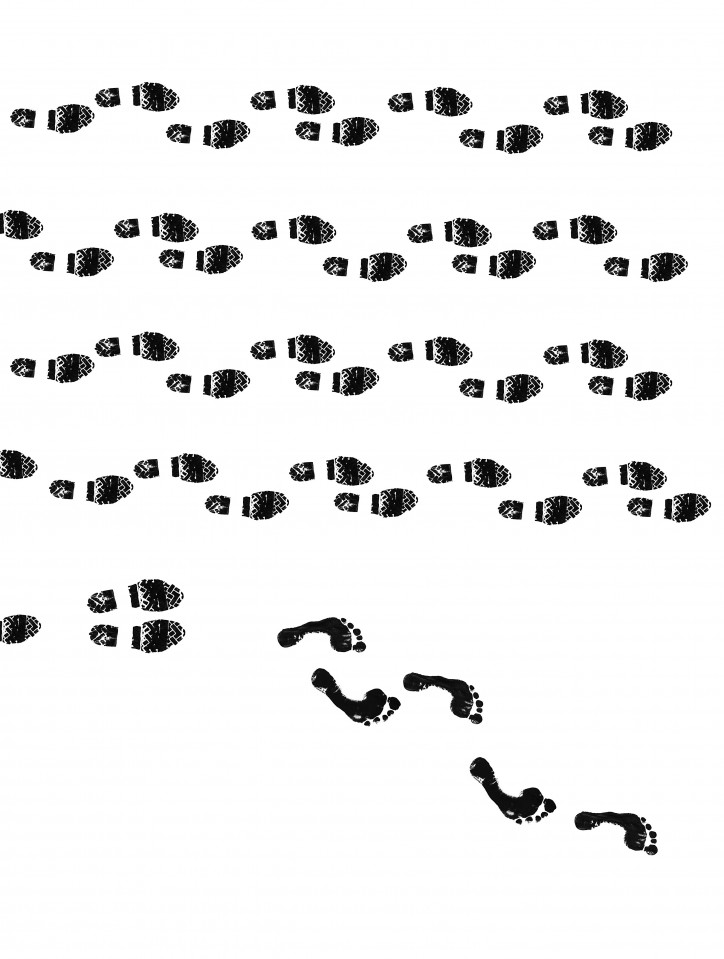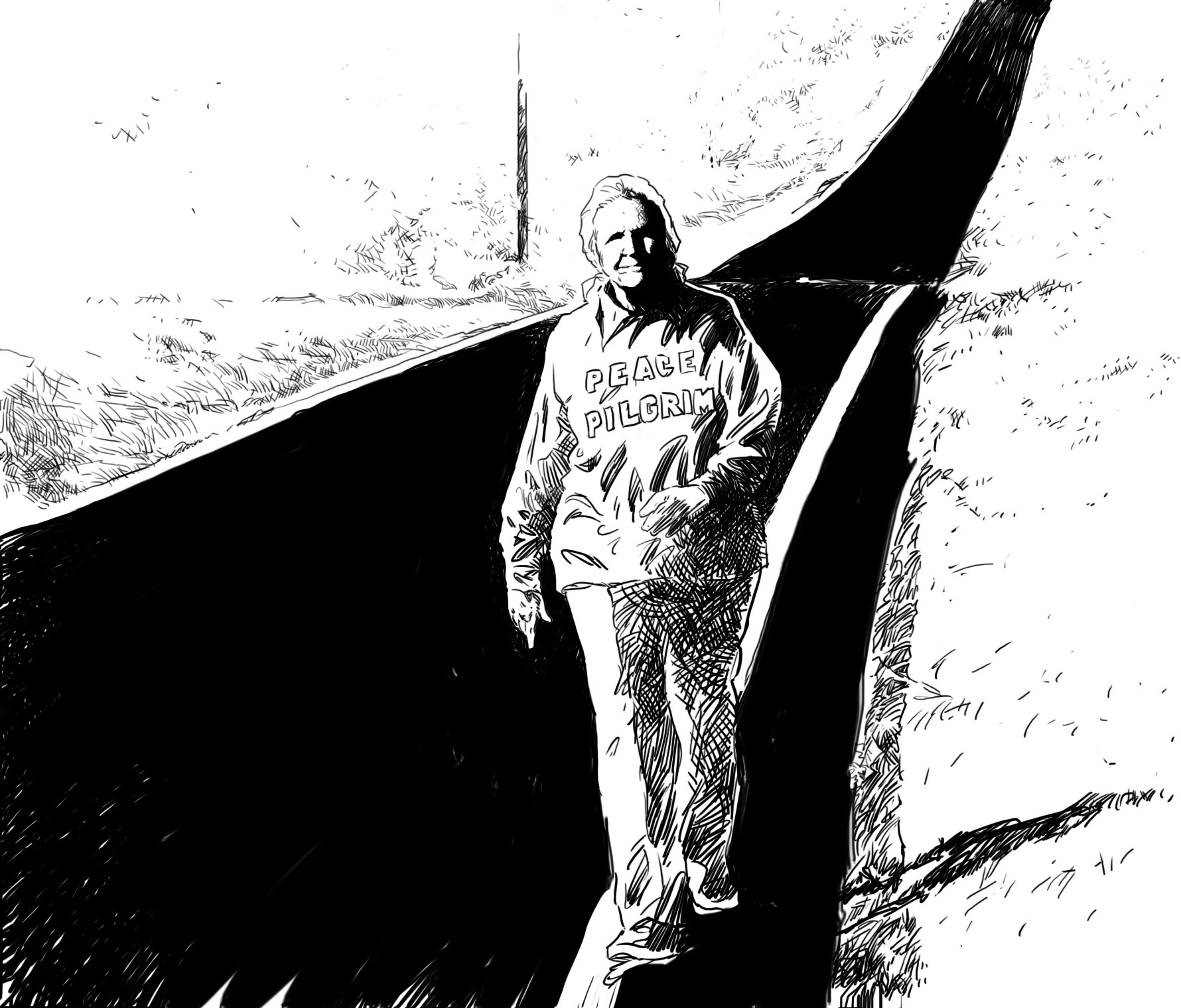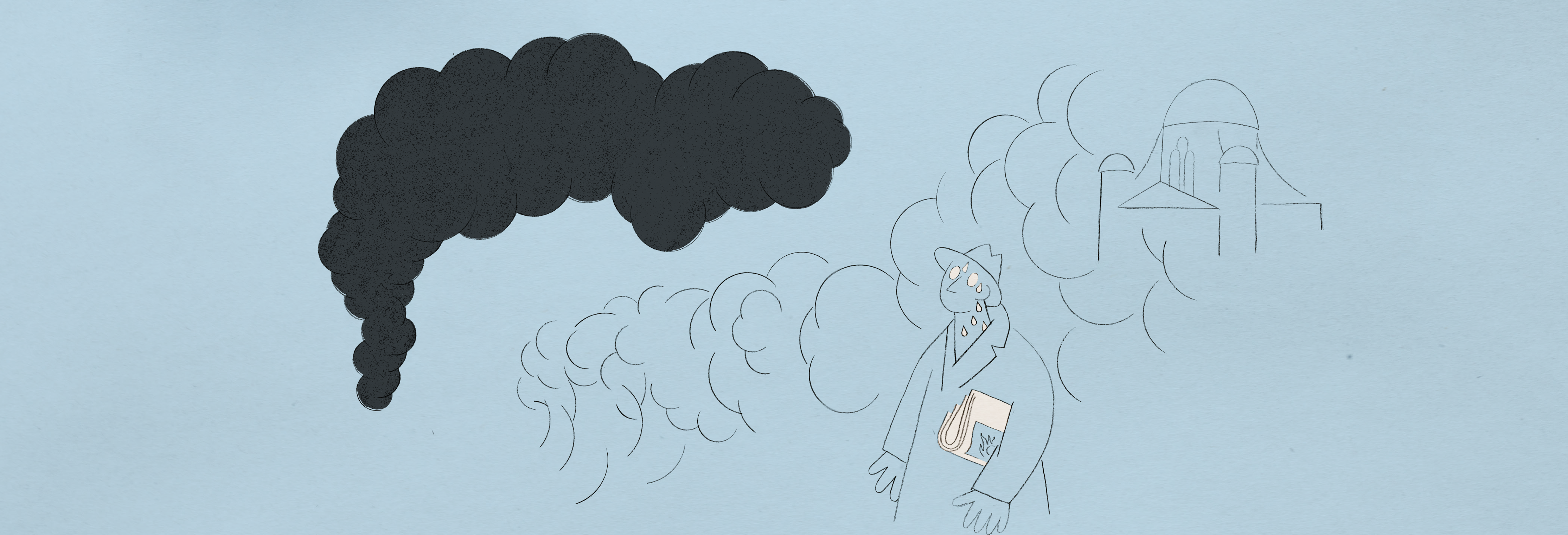
Mildred Norman believed that people are good, they just sometimes need a little inspiration to act. She chose her path to give it to them – literally.
New Year’s morning, 1953. The annual Rose Parade had begun in Pasadena. The streets were full of floats decorated with flowers, fairy-tale coaches, luxurious Porsche cars – all of them bearing the not-at-all discreet names of local businesses. American flags the size of bedsheets fluttered in the wind, scantily-clad cheerleaders danced, the jubilant crowd cheered. An archival film shows a gigantic pumpkin with holes for eyes, nose and mouth, through which amused people are waving. The pumpkin marches on, filling the whole frame. It’s like a carnival: an excess of shapes and colours, exaggeration everywhere, spectacular superfluity.
Mildred Norman stood out in the colourful crowd as she watched the parade. Grey hair in a loose ponytail, no make-up or jewellery. Modest, almost severe clothes: blue trousers, trainers, a roomy shirt and a simple tunic with the words ‘Peace Pilgrim’ on the front, and ‘Walking coast to coast for peace’ on the back. As time went by, the slogans changed: ‘Walking 10,000 miles for world disarmament’, and then ‘25,000 miles for world peace’.
From that New Year’s morning onwards, Mildred Norman walked continuously for 28 years, until her death. She travelled the length and breadth of the US seven times. She set foot in 50 states and 10 Canadian provinces, she walked across part of Mexico. In 1964, when she had walked 25,000 miles, she stopped counting. “I am a pilgrim, a wanderer. I shall remain a wanderer until mankind has learned the way of peace, walking until I am given shelter and fasting until I am given food,” she said in interviews. What pushed her to carry out her pilgrimage for almost three decades, the last ones of her life?
On foot for meaning
She carried no luggage, no change of clothing, and no money – across the 28 years of her pilgrimage, she didn’t use it once. All of her belongings fit in her pockets: a comb, a folding toothbrush, a ballpoint pen, her current correspondence. She wanted to come from nowhere and have no past, so she told nobody her real name, only using the pseudonym Peace Pilgrim. She wouldn’t say how old she was, or where she was born. She gave vague answers to journalists’ questions – a poor but happy childhood on a small farm on the East Coast. Her claim was that her private life didn’t matter. Other things were important: peace within people, peace in the world. With time, however, more facts about Peace Pilgrim emerged.
She really was born and grew up at a chicken farm outside Egg Harbor City, New Jersey. “I was a happy child. I had woods to play in, and a creek to swim in and room to grow,” she kept saying in interviews. Years later, her sister Helen Young divulged that the teenage Mildred loved to dress up, look for fashion inspiration in colourful magazines, would pose for photos in her new dresses. She would travel to Atlantic City just to get her shoes dyed to match her hat and gloves. She liked to talk, have fun, go on dates. In her adult life ,she had no money worries, she earned enough as a secretary. When she began the pilgrimage, relatives couldn’t believe it: Her?
But even in Mildred Norman’s youth, her life revolved around walks. For the many hours she spent walking her dog, she meditated on the meaning of life, searching for evidence of a higher power in nature. Although her family didn’t go to church, the teenage Mildred started asking herself questions about God and human morality. She belaboured life’s paradoxes, such as the one of altruism. On the one hand, everyone considered it one of the noblest virtues, on the other, people kept competing with each other, striving for personal wealth. The pilgrim-to-be couldn’t get her head around the contradictions she could see everywhere.

The turning point
At 30, she went for an all-night walk in the woods and experienced a hitherto unknown feeling of elation. “I came to a moonlit glade and prayed. I felt a complete willingness, without any reservations, to give my life – to dedicate my life – to service. ‘Please use me!’ I prayed to God,” she recalls in the book Peace Pilgrim: Her Life and Work in Her Own Words, a compilation of her public addresses. During that fervent night-time prayer, she felt enveloped by calm. Mildred built her story from moments of enlightenment, visions, inklings of intuition. She trusted that she had a task to complete, she only had to wait for a sign – but not passively.
Mildred Norman’s life is a manifestation of the three-stage rite of (appropriately enough) passage, as described by Victor and Edith Turner, albeit without its last phase: the integration of the individual with the community. In Peace Pilgrim’s case, the phase of withdrawal from society was preceded by 15 years of preparation for the pilgrimage. In the years following that night in the forest clearing, she transformed her life. She quit her job as a secretary and joined the staff of a care home, worked with disadvantaged youth and disabled people. “I made up for my inexperience with love, which I extended to others,” she explained later in that characteristic, preachy, slightly irritating style she had. A few years after her nocturnal spiritual awakening she divorced her husband, Stanley Rider, with whom she had escaped her family home. Years later, she said the divorce was caused by differences of outlook. During World War II, Ryder served on the front, despite her strong opposition; during these years, she was a peace activist. After the war, he sent her divorce papers from Europe and she signed them without regret.
She also gave up on old habits. The new Mildred’s weekly expenses didn’t exceed $10. She started eating only fruit, vegetables, nuts, seeds, sometimes cheese. She renounced meat, not only for health reasons. She thought pacifism should not be selective; it cannot favour some species and allow for the killing of others. Her preparations for the pilgrimage also included a purification of the mind: “I don’t eat junk food and I don’t think junk thoughts!” In 1952, she went for the first long ‘walk’. The Appalachian Trail is 3500-kilometres long and runs from Georgia to Maine. Mildred walked it in six months, as the first woman in history. It was then that she felt she was finally ready. A few months later, she left her family and friends and, as Peace Pilgrim, entered the liminal stage, or a state of limbo between two communities – according to Victor Turner, this is characterized by humility, isolation, and tests that allow us to learn new things about ourselves.
Fishing on the way
She went into the world without the protection granted by money, material goods and social status. She wore a pilgrim’s dress, which was theoretically supposed to negate her sexuality, turn her into a person with no qualities, living beyond time and biology. In practice, she was still seen as a woman: alone, without male company, and as such, easy prey. However, Peace Pilgrim seemed to ignore the limitations of her era, and of others too.
The pilgrimage was, for her, like fishing in the sea – fish came along without much effort on her part. She never approached people herself, and yet they always surrounded her. When they came to her, she would start a conversation – about how it’s a good idea to build peace within oneself, exist for people, not for objects. “My pilgrimage is not a crusade, which connotes violence. […] My walking is first of all a prayer for peace,” she would repeat.
But her pilgrimage had not only a religious, but also a political meaning. She started her march during the Korean War and the Red Scare unleashed by senator Joe McCarthy. On the one hand was the arms race, the Cold War, a growing fear of nuclear war and communism; on the other was the post-war economic boom. It seemed that the eternal dilemma of ‘to have or to be’ had just found a solution. To have, for sure. In this situation, campaigning for peace was an act of civil courage, although Mildred Norman spoke about her mission in humbler terms: “A pilgrim’s job is to rouse people from apathy and make them think.” In her book Wanderlust, Rebecca Solnit states that Peace Pilgrim’s walking fits well within the 1950s crisis of culture and spirituality that led John Cage, Gary Snyder and many other artists towards Eastern spiritual traditions such as Zen Buddhism, and Martin Luther King to India, where he learned Gandhi’s teachings about non-violence. Mildred Norman’s pilgrimage is unique in the way that although she rebelled against the world, she didn’t withdraw from it into the wilderness. Her itinerary intentionally led through the most densely populated areas of the country.
She usually walked 25 miles a day, but if she had an appointment somewhere, she was able to walk even twice that far without pause. “On very cold nights I walk through the night to keep warm. […] Like the birds, I migrate north in the summer and south in the winter. If you wish to talk to people out-of-doors, you must be where the weather is pleasant or people will not be out.” She slept on the side of the road, at cemeteries, train stations, bus stops and at the houses of people she met along the way. She also spent her nights in prison whenever she got arrested for vagrancy. She saw this forced isolation as an opportunity to speak to other prisoners about peace. This was also the reason why she never refused journalists’ interview requests. With time, she became an esteemed and distinctive speaker; she would get invited to give talks at schools and universities, sometimes she accepted offers to be driven to an event. One of these lifts had a tragic ending – Mildred Norman died in a car crash in 1981.
Thanks to her, thousands of people believe that walking has the potential to make a change. If not in the world, then at least within oneself.










